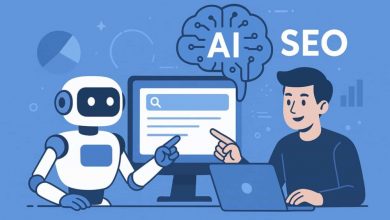How to Build a Customized Smart AI Chatbot Assistant for Your Business in 2026

AI assistants aren’t some passing tech trend — they’ve quietly worked their way into how businesses actually run. From customer chats to internal check-ins, these bots are now handling the boring, repetitive stuff that used to eat up half the day.
But let’s be real — most plug-and-play bots still sound… fake. They miss the point, forget context, and definitely don’t sound like your brand. That’s where customized smart AI chatbots step in. These AI-powered chatbots talk like you, think like your team, and actually help people instead of frustrating them.
In this post, we’ll go over how to build a smart AI chatbot assistant from scratch — one that feels like it belongs in your business, not bolted onto it.
Why Businesses Need Smart AI Chatbots in 2026
These days, customers don’t want to wait. They want real answers, right away — no “please hold,” no endless email chains, no dead-end FAQ pages. Businesses that still rely on old-school forms are already falling behind.
AI chatbots close that gap. They greet visitors, guide them to what they need, help with bookings, even handle small sales when no one’s around. On the inside, they help your team too — digging up info, checking schedules, and summarizing chats so people can focus on real work.
The payoff? Faster responses, lower costs, and happier customers — all without hiring another full-time rep.
How to Build a Customized Smart AI Chatbot Assistant
Here’s where things get real. Building your own chatbot might sound technical, but it’s more about strategy than coding. You don’t need to reinvent the wheel — you just need to build it for your road.
Step 1: Define Its Job
Before you touch a line of code, decide what the bot’s actually for.
- Customer support?
- Sales and lead generation?
- Internal knowledge sharing?
Start with one clear goal. A good chatbot solves a focused problem first — then you can expand. A “do-everything” bot usually ends up doing nothing well.
Step 2: Pick Your Platform
You’ve got choices here — and picking the right one will save you a ton of time later.
Some tools only build chatbots — the no-code kind where you drag and drop messages. They’re fine for simple stuff but hit a wall fast once you need real customization or integrations.
Then you’ve got platforms like QuickBlox that go further. They let you create customizable pre-built chatbots and bundle them with full communication features — video calls, live chat with humans, instant messaging, the works. So your bot can chat like an assistant and hand off to a person when needed — all in one place.
If you’re serious about AI chatbot development, pick a platform that can grow with you. It should let you build, train, and deploy bots while keeping every communication tool under one roof.
Step 3: Feed It Smart Data
The difference between a “meh” bot and a smart AI assistant comes down to training. You don’t need massive datasets — just the right ones.
Start by feeding your bot real material:
- FAQs from your site
- Support chat logs
- Product or service docs
- Company tone and voice examples
This gives it context — the kind that helps it answer like a person who actually works for you. Over time, you can layer in private docs or CRM data so it learns more about your customers and how they interact with your brand.
Step 4: Design Its Personality
No one wants to talk to a robot. Even if your chatbot’s powered by the smartest AI out there, it still needs a voice.
Decide how it should sound — formal or friendly, serious or playful?
It should feel like an extension of your brand, not a random voice living on your website. Give it a name, a short intro message, and a few tone examples. Consistency builds trust — and trust builds engagement.
Step 5: Integrate It Everywhere
A chatbot stuck on one page isn’t much use. Connect your AI chatbot assistant to all the places your audience already is — your website, mobile app, WhatsApp, Slack, or CRM.
If you’re building internal tools, connect it to project management platforms, HR systems, or shared drives. That’s when it starts becoming a real assistant, not just a widget.
Smart integration also means smoother handoffs — when the bot can’t help, it should instantly connect users to a human without making them start over.
Step 6: Test, Tune, Repeat
Here’s the truth — your first version won’t be perfect, and that’s fine.
Start small, test it live with real people, and keep an eye on what they ask. You’ll see patterns fast: questions it nails, ones it fumbles, and ones you never thought about. Use that feedback to train and fine-tune.
Think of your chatbot as a junior employee. You train it, it learns, and soon it’s handling way more than you expected.
Bonus Tip: Don’t Forget Data Privacy
Even if we’re skipping the legal section, one quick reminder — if your bot touches customer data, make sure it’s hosted securely and meets whatever compliance rules apply to your industry. For most businesses, that means using a platform that’s already GDPR or HIPAA aligned, not trying to bolt on security later.
Bringing It All Together
A smart AI chatbot assistant isn’t just about automation — it’s about making your business faster, sharper, and more human at scale.
When built right, it’s not replacing people. It’s taking the dull, repetitive stuff off their plates so they can focus on what actually needs judgment, empathy, or creativity.
Start small: define the job, train it on your own data, give it your voice, and put it where it’ll help the most. Every version will get better.
In 2026, the businesses winning with AI aren’t the ones chasing hype — they’re the ones quietly using customized AI chatbots to work smarter every day.





